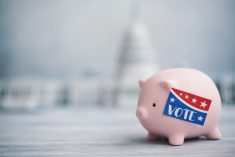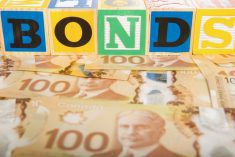On May 22, 2008, I purchased 300 shares of Bank of America (BAC) for my RRSP at $34.66 per share at an exchange of C$1.00 per US$1.00. As I recall, I sold most of my oil stocks when oil was in the range of $140 to $150 and I was looking for a bargain to redeploy the cash. American bank stocks had already taken a big hit with BAC down $20.00 or about 35 per cent. Exciting for a bargain hunter like me.
The housing crisis, subsequent recession and bear market were well on their way, but little did I anticipate the financial tornado that was yet to unfold. Having successfully navigated the 2000-02 bear market, I hubristically thought I could similarly outrun the 2008 bear. As every hiker knows … you can’t outrun a bear!
Read Also

Gentle treatments for pain in the neck
Heading toward year-end, people unknowingly tense up against the cold and busyness, causing neck pain that can often be treated with appropriate support and gentle mobility, athletic therapist Kathlyn Hossack says.
My BAC shares bounced around from May until September before the trap door opened, falling a further 90 per cent in the next five months, hitting a low of three bucks. Many American banks crashed similarly, coincident with a 55 per cent decline in the S&P 500.
As the economy was healing, on August 5, 2011, I purchased 150 shares of a fellow American bank JPMorgan Chase (JPM) for $37.80 at an exchange of C$0.99 per US$1.00. Rather than buy more shares of the same bank, I chose to diversify.
Fast-forward: banks and lifecos perform better in higher interest rate environments. Rates rose last winter with 10-year bonds moving from paying 1.0 to 1.7 per cent, taking bank stocks along with them. After this run-up, in March I sold these shares. BAC was sold for C$36.55 at a 1.26 exchange and the JPM for C$154.65 at a 1.25 exchange. My BAC profit was effectively just the conversion rate plus dividends, a rather paltry return over 13 years but better than a loss. JPM, on the other hand, gained four times plus dividends, an excellent return over a decade. I still hold 200 of BAC and 100 of JPM.
What does this story illustrate?
- Hubris isn’t a good trait in any pursuit, especially investing. Mistakes are common.
- Stocks can recover from massive declines. If so, it’s likely to be a long road.
- You might wonder why I held BAC for so long while conventional wisdom suggests losers be sold. Whether I bought at $3.00 or held existing shares, those shares delivered 12 times in 12 years from their low, an exceptional return. Some of the best returns can be achieved in recovery. Naturally, it’s better to buy at the bottom, if possible.
- Every loser contains a visceral lesson. One of the benefits of holding a loser is the perpetual reminder of that lesson.
- A recovery is dependent on positive cash flows and profitability. BAC has been profitable every year since 2011.
- If an industry is in complete disarray but also represents good value and is recovering, it can be helpful to pick a different name to diversify within the industry. This leads to more holdings while reducing risk.
- I didn’t sell because I thought BAC and JPM were grossly overvalued. Rather, banks became too large a portion of my RRSP after the surge, and still represent 15 per cent of my U.S.-based RRSP holdings.
- The stock market doesn’t care what you paid for a stock, and neither should you. Any decision to buy more, hold or sell should be based on current valuation and balance within your portfolio. Although, to be fair, it feels good to recover an initial investment and be rewarded for patience and perseverance.
- Isn’t this fun and challenging all at the same time?
Big question: is the oil and gas industry at the same juncture as U.S banks in 2011? Only time will tell but I think there are distinct similarities, including society’s incessant beating on the industry. Oil stocks took a tumble mid-summer due to Delta variant concerns. However, an article on Bloomberg.com suggested worldwide oil consumption was 98 million barrels per day or 98 per cent of pre-COVID levels and inventories continued to decline. American crude oil inventory was at the low end of its five-year range with gasoline inventory actually below its five-year range. This prompted President Biden in an extreme display of political and environmental hypocrisy to plea with OPEC to increase production, proving once again when push comes to shove, politicians lose their principles.
More importantly, and my sarcasm aside, it illustrates how sentiment can change.
















